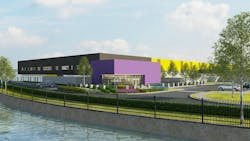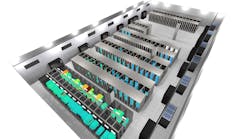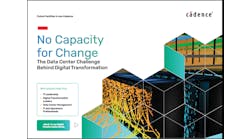How to Build Data Centers Faster, Better, and More Cost Effectively
In this week’s Voices of the Industry, Brian Mattson, Vice President of Construction at RagingWire Data Centers, analyzes how to build data centers and accelerate the pace of modern data center construction while staying under budget and improving quality.
Brian Mattson, Vice President of Construction at RagingWire Data Centers
There is no question that the data center market is booming. The research firm Markets and Markets projects that the data center colocation market is expected to grow from $31.52 billion in 2017 to $62.30 billion by 2022.
Those numbers are impressive, but they’re only part of the story. Client expectations are changing as well. When evaluating data centers, clients now demand:
Speed – Savvy customers now expect construction cycles of six to nine months for new state-of-the-art data centers, as opposed to the 12 to 18 month cycles of only a few years ago.
Cost-Efficiency – Construction projects that cost $10 million per megawatt a few years ago are in the range of $7 million per megawatt today. Customers expect to see that downward cost trend continue.
Aesthetics – Exteriors must be attractive, and interiors must be comfortable – all while integrating mission critical infrastructure for power, cooling, telecommunications, and security.
With so much at stake, the mega-billion-dollar question is: How can construction managers stay ahead of the industry growth rates while exceeding the new expectations of clients?
Construction managers will need to:
- Firmly control the “Project Triangle”
- Effectively deploy and manage the supply team
- Creatively marry form and function
Let’s take a closer look at each of these objectives.
Firmly Control the “Project Triangle”
To complete a data center project in six to nine months, construction managers must control scope, budgets, and schedule, otherwise known as the three legs of the “Project Triangle.”
Scope must be managed with crystal clarity, ensuring alignment with your company’s business goals (markets, clients, scale) and well documented in the owner’s project requirements (OPR) to the data center design. Change management must be agile to adapt to innovation and changing conditions.
Budgets to build data centers need to be aligned with scope and schedule to deliver on the business case pro-forma of the project.
Schedules should be end-to-end, including permitting, supply chain, design, construction, commissioning, and fit-out, and use earned value management (EVM) to stay on plan for time-cost-resources.
Effectively Deploy and Manage the Supply Team
To further accelerate the construction cycle and the time it takes to build data centers, top data center companies are turning the supply chain concept into a precisely organized “supply team” of program managers, infrastructure manufacturers, and construction partners.
The biggest differences between a supply chain and a supply team are how the work gets done and the nature of the work itself.
Supply teams leverage the expertise and capabilities of internal resources as well as resources of supplier partners. By identifying key skill sets, selecting the right team members, integrating closely with the business plan, and managing and measuring team performance, a successful supply team can be deployed and reconfigured with predictable timelines for project milestones.
[clickToTweet tweet=”Brian Mattson – Building a world-class data center requires addressing local environmental and weather conditions. ” quote=”Brian Mattson – Building a world-class data center requires addressing local environmental and weather conditions. “]
The nature of the construction project is changing too. Years ago, critical infrastructure was largely assembled onsite. This process slowed the production schedule by consuming considerable manpower, non-concurrent time, and space. Today, industry leading data center companies partner with key suppliers to design infrastructure components which are then built at the factory and shipped to the construction site for installation. The result is better quality, lower costs, and faster delivery.
The effect of a well-managed supply team can be profound. For example, our newest data center in Ashburn, Virginia, which features 245,000 square feet of space and 16 megawatts of power, will be IST (integrated systems test) completed in approximately six months from the start of precast.
Creatively Marry Form and Function
Building a world-class data center requires addressing local environmental and weather conditions. In one location the power utility might have unique requirements for transmission and delivery. In another location, the local government might have special zoning or aesthetic regulations. Depending on the region, data centers must be prepared for snow, ice, hurricanes, tropical storms, droughts and any other harsh elements.
For example, our Dallas TX1 Data Center was built to withstand an EF-3 tornado with winds of 136 mph. To address water quality and draught conditions, we installed one of the largest water-free cooling systems in the U.S.
In addition, new data centers must provide a work environment for technology professionals that sparks collaboration, creativity, and comfort, while adding beauty and character to the surrounding neighborhood. Our data centers include multi-function meeting spaces, lounges, exercise rooms, and architecturally significant exteriors so that tech professionals used to working for Bay Area or Silicon Valley companies will feel right at home.
Plan. Build. Improve. Repeat.
The best data center construction teams relentlessly focus on improvement. We can always do better, and we’re focused on learning ways to improve our time to market, cost-efficiency, functionality, and flexibility for future projects.
[clickToTweet tweet=”Brian Mattson – The best data center construction teams relentlessly focus on improvement. ” quote=”Brian Mattson – The best data center construction teams relentlessly focus on improvement. “]
Internally, my team’s mantra is “Credible, Capable, Best-in-Class.” We strive to do what we say, expand our knowledge and skills, and be the best at what we do. We maintain an intense focus on benchmarking all elements of project performance and metrics. This benchmarking allows us to target and track continuous improvement in cost, schedule, manpower levels, safety, and quality.
Brian Mattson is Vice President of Construction at RagingWire Data Centers.





